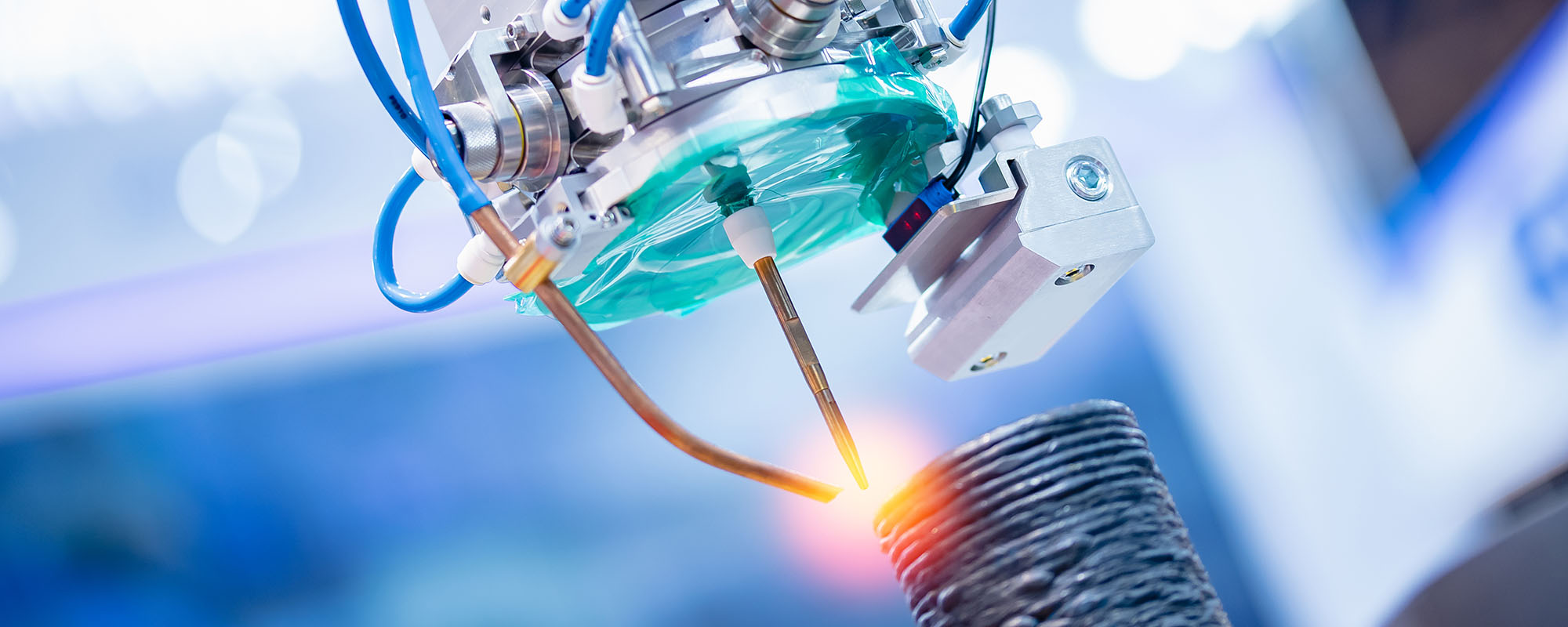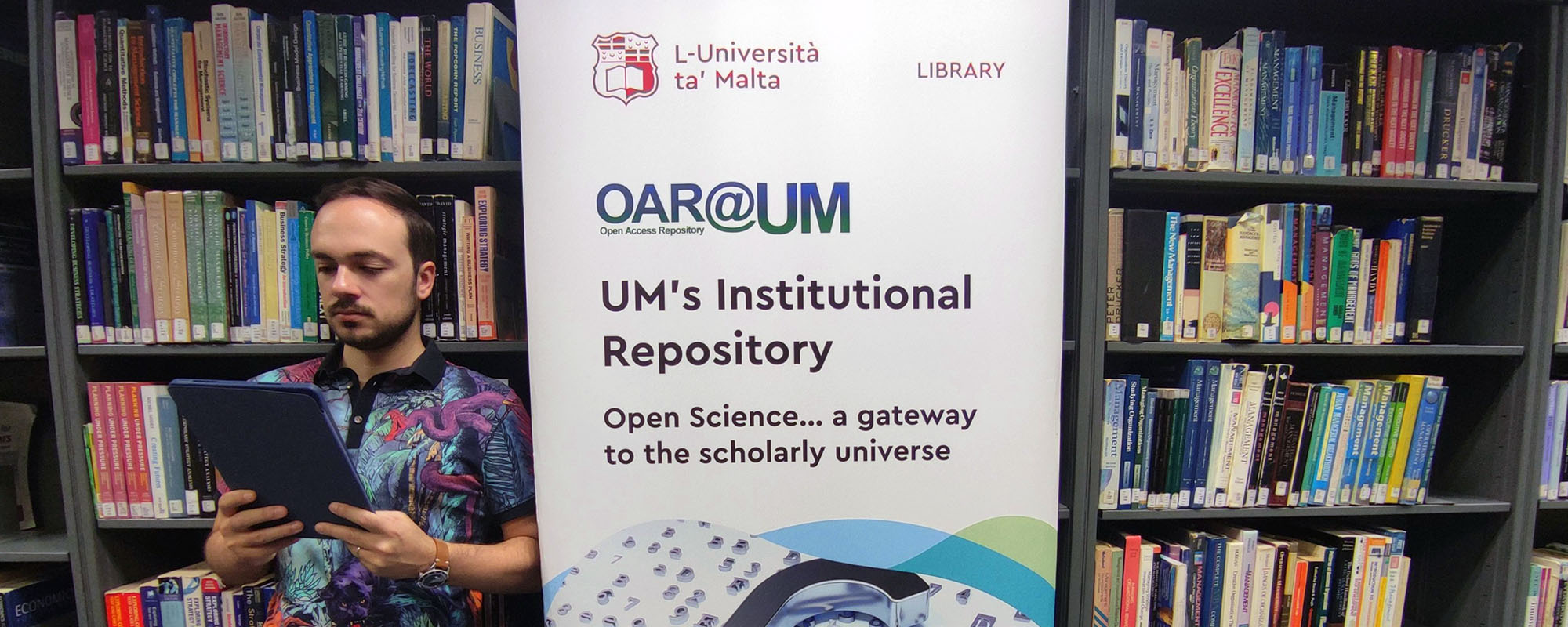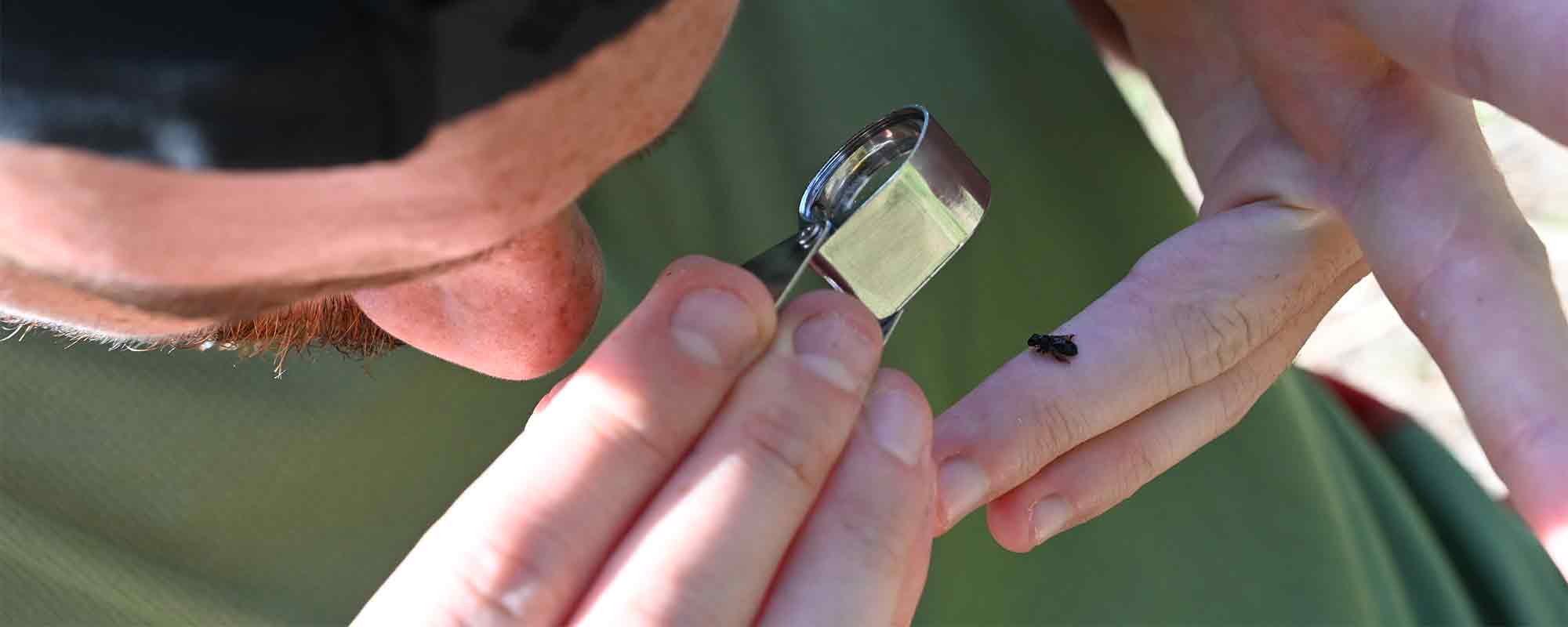While the advent of 3D metal printing may redefine how designers develop parts for products, the process itself is not without faults. Andre Giordimaina speaks with THINK about the GLAM Project, which aims to improve the process of 3D metal printing by optimising the finish and performance of designed parts.
Continue readingFinding a Home in Malta
Getting on the property ladder is incredibly difficult. Unless you are fortunate enough that your parents already own several properties, you will most likely be stuck for the rest of your adult life paying off your first (and possibly only) one-bedroom apartment. Is this grim future set in stone, or are there more creative solutions?
Continue readingA Decade of Open Access at UM
This year marks a significant milestone for UM as we celebrate the 10th anniversary of OAR@UM, the University’s Open Access Repository. Its role reflects UM’s commitment to enhance the visibility and dissemination of research output generated at UM.
Continue reading3D Printing Balloons Inflates Enthusiasm for Future Technology
With the rise in popularity of 3D printing, the medium has become more accessible. What’s more, recent advancements in the field have made the technology rather intriguing. THINK explores the latest UM research on the development of 3D-printed balloons.
Continue readingHistory of THINK
How much do you know about the history of THINK? If you’re a THINK superfan, then you know that the first edition wasn’t called THINK. Read on to learn more about how THINK evolved over the last decade.
Continue readingBHums: The Degree for Free Spirits
A free spirit should not be bound to the confines of one academic discipline. With its focus on human experiences, interdisciplinary approaches, critical thinking, and creativity, the BHums will certainly satisfy your voracious intellectual appetite.
Continue readingHelp Monitor the Buzz – Join the Malta Pollinator Monitoring Scheme
Calling all nature enthusiasts. Are you alarmed by the rapid decline of critters which pollinate our plants? Do you want to have a positive impact on the world around you? Then consider signing up to become a citizen scientist in the Malta Pollinator Monitoring Scheme (MPOMS) today!
Continue readingUniversity on the Edge
The Latin phrase alma mater, translated to ‘nourishing mother’, is frequently used to refer to a university. From that, we get the term alumnus, ‘one who is nourished’ when referring to graduates. But the nourishers and the nourished, the staff and the students, are in trouble.
University life can be incredibly stressful for staff and students alike. The staff have to cope with more people meeting the necessary standards to enter university and the different capabilities and needs they bring with them. Students are under constant pressure to get high marks, meet all their assignment deadlines, and attend extra-curricular activities — not to mention the daily struggle to find parking!
These are the typical and surface-level struggles of University of Malta (UM) staff and students. But the reality is that many of them also struggle with things they won’t mention out loud.
With the Covid-19 pandemic, the stresses of commute times and having to spend long hours at the university have decreased, but mental health struggles have seen a sharp rise.
In 2019 it was already reported that in a sample of 13,000 UM students, 36% met the criteria for a mental health disorder. The Covid-19 situation combined with the switch to online learning has no doubt exacerbated these challenges and created new ones. While many have adjusted to these changes, others are trying to come to grips with the new normal and consequently struggle in their mental health.
Anxiety has taken hold of many during the pandemic, making those already prone to worry even more anxious. Many fear contracting the virus and/or passing it on to loved ones, and so they are constantly vigilant and taking precautions. This hyper-alertness can cause exhaustion of the mind and body, as research indicates a strong correlation between mental wellbeing and bodily health. For example, negative mental wellbeing increases the risk of developing cardiovascular disease in particular.

For many, the switch to online learning and telework is adding to the already stressful occupation of being a UM staff member or student. Online learning is a poor substitute for a real classroom. The SALT surveys reported that the majority of UM students (around 76%) were generally dissatisfied with the shift to online learning, and 66% experienced symptoms of anxiety related to their studies. This is due to many factors, including the perception of a lack of understanding and communication from staff as well as being burdened with a bigger workload. In addition, many students and staff struggle to work in unsuitable home environments with distractors like noise, construction work, pets, family members, and children shouting. This forces many staff and students to travel around to cafés or other people’s homes to work efficiently.
These combined stressors are making some students lose enthusiasm for their courses. And in return, lecturers also feel demotivated because of the lack of participation from students.
While UM staff go through their own stresses brought about by the pandemic, most of them are in secure employment. On the other hand, most university students are still young and unskilled, and so get odd jobs in the entertainment, commercial, and tourism industries. Many of these jobs have been slashed due to the pandemic. This, in turn, is causing much anxiety among the student population because they wonder if there will be jobs left for them in the coming summers, or even after they graduate.
The uncertainty of the future, coupled with these stressful and sudden changes, can contribute to depression. The loneliness and isolation caused by the near-complete absence of campus life and social events have no doubt exacerbated these depressive effects. In a local study, an alarming 35% of participants, most of them young, felt extremely lonely in 2020 compared to just 2% in 2019. Many new students have never even met their classmates in person.
Fortunately, the University of Malta remains committed to the mental health and success of its staff and students. While many lectures are not being held physically, the university’s doors are still open to provide a quiet and structured work environment for those who need it. Once lockdown ends the Calm Room will be available from Monday to Friday between 9 am and 5 pm to provide a safe, calm space for students to gather their thoughts and relieve anxiety. And finally, the university offers Counselling Services, a dedicated team of psychologists, psychiatrists, and social workers who attend to mental health issues that require particular care.

Interested in the topic? Betapsi has focused their March episode of ‘.Virgola’ on the topic of ‘University Mental Health’ where we have interviewed Prof. Andrew Azzopardi, the Dean of the Faculty of Social Wellbeing, regarding this subject. Visit our Facebook page ‘Betapsi Malta’ for further information.
Further Reading
Definition of ALMA MATER. Merriam-webster.com. Retrieved 23 March 2021, from https://www.merriam-webster.com/dictionary/alma%20mater.
Raway, L. (2019). Attitudes towards Mental Health and Willingness to Seek Psychological Help: A Quantitative study among University Students. [Published Bachelor of Honours dissertation], University of Malta.
Laura D. Kubzansky, Jeff C. Huffman, Julia K. Boehm, Rosalba Hernandez et al. (2018). Positive Psychological Well-Being and Cardiovascular Disease: JACC Health Promotion Series. Journal of the American College of Cardiology. 72 (12), 1382-1396. doi: https://doi.org/10.1016/j.jacc.2018.07.042.
Cuschieri, Attard, Bartolo, Attard et al. (2020). Learning, teaching and assessment during the pandemic at the University of Malta. Findings of the SALT Surveys
Bonnici J., Clark M., Azzopardi A. (2020). Fear of COVID-19 and its Impact on Maltese University Students’ Wellbeing and Substance Use. Malta Journal of Health Sciences. doi: 10.14614/FEARCOVID19/7/20
Counselling Services. (n.d.). https://www.um.edu.mt/services/health-wellness/counselling
An oasis of calm for students with autism: KSU launches Calm Room. (2020, November 25). UM Newspoint. https://www.um.edu.mt/newspoint/news/2020/11/calm-room-launched
The unusual suspects
When it comes to technology’s advances, it has always been said that creative tasks will remain out of their reach. Jasper Schellekens writes about one team’s efforts to build a game that proves that notion wrong.
The murder mystery plot is a classic in video games; take Grim Fandango, L.A. Noire, and the epic Witcher III. But as fun as they are, they do have a downside to them—they don’t often offer much replayability. Once you find out the butler did it, there isn’t much point in playing again. However, a team of academics and game designers are joining forces to pair open data with computer generated content to create a game that gives players a new mystery to solve every time they play.

The University of Malta’s Dr Antonios Liapis and New York University’s Michael Cerny Green, Gabriella A. B. Barros, and Julian Togelius want to break new ground by using artificial intelligence (AI) for content creation.
They’re handing the design job over to an algorithm. The result is a game in which all characters, places, and items are generated using open data, making every play session, every murder mystery, unique. That game is DATA Agent.
Gameplay vs Technical Innovation
AI often only enters the conversation in the form of expletives, when people play games such as FIFA and players on their virtual team don’t make the right turn, or when there is a glitch in a first-person shooter like Call of Duty. But the potential applications of AI in games are far greater than merely making objects and characters move through the game world realistically. AI can also be used to create unique content—they can be creative.
While creating content this way is nothing new, the focus on using AI has typically been purely algorithmic, with content being generated through computational procedures. No Man’s Sky, a space exploration game that took the world (and crowdfunding platforms) by storm in 2015, generated a lot of hype around its use of computational procedures to create varied and different content for each player. The makers of No Man’s Sky promised their players galaxies to explore, but enthusiasm waned in part due to the monotonous game play. DATA Agent learnt from this example. The game instead taps into existing information available online from Wikipedia, Wikimedia Commons, and Google Street View and uses that to create a whole new experience.
Data: the Robot’s Muse
A human designer draws on their experiences for inspiration. But what are experiences if not subjectively recorded data on the unreliable wetware that is the human brain? Similarly, a large quantity of freely available data can be used as a stand-in for human experience to ‘inspire’ a game’s creation.
According to a report by UK non-profit Nesta, machines will struggle with creative tasks. But researchers in creative computing want AI to create as well as humans can.
However, before we grab our pitchforks and run AI out of town, it must be said that games using online data sources are often rather unplayable. Creating content from unrefined data can lead to absurd and offensive gameplay situations. Angelina, a game-making AI created by Mike Cook at Falmouth University created A Rogue Dream. This game uses Google Autocomplete functions to name the player’s abilities, enemies, and healing items based on an initial prompt by the player. Problems occasionally arose as nationalities and gender became linked to racial slurs and dangerous stereotypes. Apparently there are awful people influencing autocomplete results on the internet.
DATA Agent uses backstory to mitigate problems arising from absurd results. A revised user interface also makes playing the game more intuitive and less like poring over musty old data sheets.

So what is it really?
In DATA Agent, you are a detective tasked with finding a time-traveling murderer now masquerading as a historical figure. DATA Agent creates a murder victim based on a person’s name and builds the victim’s character and story using data from their Wikipedia article.
This makes the backstory a central aspect to the game. It is carefully crafted to explain the context of the links between the entities found by the algorithm. Firstly, it serves to explain expected inconsistencies. Some characters’ lives did not historically overlap, but they are still grouped together as characters in the game. It also clarifies that the murderer is not a real person but rather a nefarious doppelganger. After all, it would be a bit absurd to have Albert Einstein be a witness to Attila the Hun’s murder. Also, casting a beloved figure as a killer could influence the game’s enjoyment and start riots. Not to mention that some of the people on Wikipedia are still alive, and no university could afford the inevitable avalanche of legal battles.
Rather than increase the algorithm’s complexity to identify all backstory problems, the game instead makes the issues part of the narrative. In the game’s universe, criminals travel back in time to murder famous people. This murder shatters the existing timeline, causing temporal inconsistencies: that’s why Einstein and Attila the Hun can exist simultaneously. An agent of DATA is sent back in time to find the killer, but time travel scrambles the information they receive, and they can only provide the player with the suspect’s details. The player then needs to gather intel and clues from other non-player characters, objects, and locations to try and identify the culprit, now masquerading as one of the suspects. The murderer, who, like the DATA Agent, is from an alternate timeline, also has incomplete information about the person they are impersonating and will need to improvise answers. If the player catches the suspect in a lie, they can identify the murderous, time-traveling doppelganger and solve the mystery!

De-mystifying the Mystery
The murder mystery starts where murder mysteries always do, with a murder. And that starts with identifying the victim. The victim’s name becomes the seed for the rest of the characters, places, and items. Suspects are chosen based on their links to the victim and must always share a common characteristic. For example, Britney Spears and Diana Ross are both classified as ‘singer’ in the data used. The algorithm searches for people with links to the victim and turns them into suspects.
But a good murder-mystery needs more than just suspects and a victim. As Sherlock Holmes says, a good investigation is ‘founded upon the observation of trifles.’ So the story must also have locations to explore, objects to investigate for clues, and people to interrogate. These are the game’s ‘trifles’ and that’s why the algorithm also searches for related articles for each suspect. The related articles about places are converted into locations in the game, and the related articles about people are converted into NPCs. Everything else is made into game items.
The Case of Britney Spears
This results in games like “The Case of Britney Spears” with Aretha Franklin, Diana Ross, and Taylor Hicks as the suspects. In the case of Britney Spears, the player could interact with NPCs such as Whitney Houston, Jamie Lynn Spears, and Katy Perry. They could also travel from McComb in Mississippi to New York City. As they work their way through the game, they would uncover that the evil time-traveling doppelganger had taken the place of the greatest diva of them all: Diana Ross.
Oops, I learned it again
DATA Agent goes beyond refining the technical aspects of organising data and gameplay. In the age where so much freely available information is ignored because it is presented in an inaccessible or boring format, data games could be game-changing (pun intended).
In 1985, Broderbund released their game Where in the World is Carmen Sandiego?, where the player tracked criminal henchmen and eventually mastermind Carmen Sandiego herself by following geographical trivia clues. It was a surprise hit, becoming Broderbund’s third best-selling Commodore game as of late 1987. It had tapped into an unanticipated market, becoming an educational staple in many North American schools.
Facts may have lost some of their lustre since the rise of fake news, but games like Where in the World is Carmen Sandiego? are proof that learning doesn’t have to be boring. And this is where products such as DATA Agent could thrive. After all, the game uses real data and actual facts about the victims and suspects. The player’s main goal is to catch the doppelganger’s mistake in their recounting of facts, requiring careful attention. The kind of attention you may not have when reading a textbook. This type of increased engagement with material has been linked to improving information retention.In the end, when you’ve traveled through the game’s various locations, found a number of items related to the murder victim, and uncovered the time-travelling murderer, you’ll hardy be aware that you’ve been taught.
‘Education never ends, Watson. It is a series of lessons, with the greatest for the last.’ – Sir Arthur Conan Doyle, His Last Bow.
Home
Author: Dr Pat Bonello

The theme of this edition of THINK magazine is meant to evoke feelings of belongingness, identity, warmth, and solidarity. Our home is usually a place associated with these positive feelings: a place where I can be myself and, in a safe environment, develop into the me I want to be. This is something valuable, something which we should safeguard passionately. At the same time, as a social worker, I know many people for whom ‘home’ does not have such positive connotations.
The people that come to mind are abuse victims, children and adults living with domestic violence. For them, ‘home’ means suffering, often accompanied by a feeling of helplessness. Others find ‘home’ a difficult concept. Think of people who cannot make ends meet, who have difficulty paying their rent, who cannot afford to buy their own house because of high property prices. Then there are those who can no longer live in their own house because they are unable to look after themselves, be it because of old age or health issues. There are members of broken families who have difficulty identifying their home, asylum seekers who left home behind, and people who have lost a family member and now associate ‘home’ with sadness.
Everybody needs a place where he or she feels ‘held’ and safe enough to develop his or her potential. But if ‘home’ does not fit this bill, where will this environment be?
This is where a network of social solidarity, both formal and informal, comes into play. Alternatives for people with issues related to the concept of ‘home’ include foster placements, shelters, or other residential facilities. But these services are tasked with much more than providing mere accommodation. They need to create an environment which meets the needs of the persons who live there. They need to provide a safe space for people to come in, be themselves, and develop their potential.
For those who don’t need to move out of their current home, options include support and professional interventions, such as family therapy, to deal with the sadness associated around the home, or to improve the dynamics within it. Social service providers in Malta and Gozo carry a lot of responsibility. Unfortunately, the supply does not always meet demand, and some people have to wait considerably before being able to move into more comfortable and nurturing placements—sometimes while living in abusive environments. In other situations, the necessary support is not readily available, as in the cases of asylum seekers and homeless people who need a roof over their head.
While formal support is important and necessary, all Maltese citizens need to share the responsibility and offer a helping hand without judgement. That way, Malta will be able to nurture communities that work together to create ‘homes’ which cherish everyone, respecting their dignity and worth and encouraging them to flourish.










